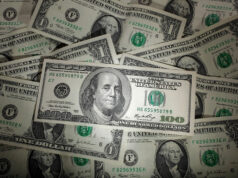Like a diamond, the Macallan Edition No. 5 is judged by its color.
 THE Edition series was launched by single-malt distiller Macallan in 2015 with the Macallan Edition No. 1, which celebrates its relationship with oak. Every year since, they’ve released a Limited Edition to celebrate qualities present in their whisky. No. 2 celebrates taste (with a collaboration with the Spanish culinary geniuses the Roca brothers), No. 3 presents their expertise in aroma (collaborating with master perfumer Roja Dove, who served as the first Guerlain Global Ambassador outside the Guerlain family), and finally, No. 4 serves to highlight their devotion to craftsmanship.
THE Edition series was launched by single-malt distiller Macallan in 2015 with the Macallan Edition No. 1, which celebrates its relationship with oak. Every year since, they’ve released a Limited Edition to celebrate qualities present in their whisky. No. 2 celebrates taste (with a collaboration with the Spanish culinary geniuses the Roca brothers), No. 3 presents their expertise in aroma (collaborating with master perfumer Roja Dove, who served as the first Guerlain Global Ambassador outside the Guerlain family), and finally, No. 4 serves to highlight their devotion to craftsmanship.
No. 5, as we’ve mentioned above, celebrates color, with a collaboration with the Pantone Color Institute to create a unique shade of purple for the label. Whisky, when it begins, is clear just as any other spirit (like vodka), but then it spends time within an oak barrel. It’s this ageing process that lends color and unique flavor to the spirit, depending on how it interacted with the wood.
Of course, some manufacturers have already learned how to play around with the system with the addition of caramel coloring. Ostensibly, this will not affect the taste of the whisky, but it will definitely change the look. It is often believed that a product’s tint will show how long a product has been held inside an oak barrel, but that’s not always the case. The color might trick a customer into buying and cherishing a whisky that might not deserve this love so much. “It’s about being transparent,” said Randall Tan, a Macallan Brand Ambassador we met during the launch of the No. 5 in Okada last week. “We’re very, very proud of the fact that one of our pillars is actually our natural color. We want people to know that what you see is what you get; 100% of the color comes from the wood itself.”
Press material pronounces this color as “sunlit barley,” but it is more akin to a lightly-tanned leather. This color was achieved by blending multiple casks (different batches of malt whisky coming a single distillery is still a single malt). “There’s a lot of tasting, a lot of testing, a lot of comparison, and we always have a control batch.” The No. 5 was made via ageing in American oak casks, which Mr. Tan says have different traits from their European relations. Wood from American oak trees has tighter grain, which yields lighter colors and give flavors like vanilla, citrus, and tropical fruits. Wood from European oak trees has a looser grain, which gives a richer color and darker and deeper flavors such as spices and dark fruits. When we tasted the No. 5, it had a scent like smoky, wooded honey, a mellow taste with a spicy endnote, and a soft heat like afternoon sunlight filtered through a stained-glass window. “It does give you a different dimension and a different look at what we can achieve,” said Mr. Tan.
Only be about 255,000 bottles of Edition No. 5 will be released, and each one will cost about £100 (P6,612). Last year, a bottle from Macallan, The Macallan Fine and Rare 60-Year-Old 1926, was sold at auction for $1.9 million. Asked about having some of the most expensive whiskies sold at auction (another Macallan bottle was sold for $1.2 million), Mr. Tan said, “If I were to be put in a position to answer that question, I think we would say that we have one of the most sought-after whiskies. Everybody knows the brand, everybody knows that we always push boundaries and we keep raising the bar, even for ourselves.”
Macallan is a brand owned by Edrington, which also produces Glenrothes and The Famous Grouse. Just last week, it was announced that Japanese distilling group Suntory (behind Yamazaki and American whiskey Jim Beam) bought a 10% stake in Edrington. — Joseph L. Garcia



